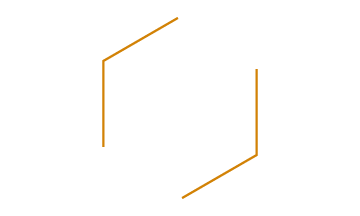Author Affiliation
Treviño: Smeal College of Business, The Pennsylvania
State University. Haidt: New York
University Stern School of Business. Filabi:
Ethical Systems. Corresponding author’s e-mail:
[email protected].
References
1. U.S. Sentencing Commission.
(1991). Chapter eight—Sentencing of
organizations. Retrieved from https://
www.ussc.gov/sites/default/files/pdf/
guidelines-manual/1991/manual-pdf/
Chapter_8.pdf
2. U.S. Sentencing Commission.
(2016). 2016 Chapter 8: Chapter
eight—Sentencing of organizations.
Retrieved from https://www.ussc.
gov/guidelines/2016-guidelinesmanual/
2016-chapter-8#NaN
3. Dudley, W. C. (2014). Enhancing
financial stability by improving culture
in the financial services industry
[Speech transcript]. Retrieved from
Federal Reserve Bank of New York
website: https://www.newyorkfed.
org/newsevents/speeches/2014/
dud141020a.html
4. Ketchum, R. (2016, January 5).
2016 regulatory and examination
priorities letter. Retrieved from
Financial Industry Regulatory
Authority website: http://www.finra.
org/industry/2016-regulatory-andexamination-
priorities-letter
5. Office of the Comptroller of the
Currency. (2016). Comptroller’s
handbook: Corporate and risk
governance (Version 1.0). Retrieved
from https://www.occ.gov/publications/
publications-by-type/comptrollershandbook/
corporate-risk-governance/
pub-ch-corporate-risk.pdf
6. U.S. Consumer Financial Protection
Bureau. (2016, September 4). Consent
order in the matter of Wells Fargo
Bank, N.A. (Administrative Proceeding
2016-CFPB-0015). Retrieved from
http://files.consumerfinance.
gov/f/documents/092016_cfpb_
WFBconsentorder.pdf
7. U.S. Department of Justice, Office
of Public Affairs. (2017, January 11).
Volkswagen AG agrees to plead
guilty and pay $4.3 billion in criminal
and civil penalties; six Volkswagen
executives and employees are indicted
in connection with conspiracy to cheat
U.S. emissions tests [Press release].
Retrieved from https://www.justice.gov/
opa/pr/volkswagen-ag-agrees-pleadguilty-
and-pay-43-billion-criminal-andcivil-
penalties-six
8. Treviño, L. K., Weaver, G. R., & Reynolds,
S. J. (2006). Behavioral ethics in
organizations: A review. Journal of
Management, 32, 951–989. https://doi.
org/10.1177/0149206306294258
9. Shweder, R. A. (1996). True
ethnography: The lore, the law, and
the lure. In R. Jessor, A. Colby, & R. A.
Shweder (Eds.), Ethnography and human
development (pp. 15–52). Chicago, IL:
University of Chicago Press.
10. Zimbardo, P. G. (2007). The Lucifer
effect: Understanding how good people
turn evil. New York, NY: Random House.
11. Treviño, L., & Nelson, K. (2017).
Managing business ethics (7th ed.).
Hoboken, NJ: Wiley.
12. Treviño, L. K., Weaver, G. R., &
Brown, M. E. (2008). It’s lovely at the
top: Hierarchical levels, identities,
and perceptions of organizational
ethics. Business Ethics Quarterly, 18,
233–252. https://doi.org/10.1017/
S1052150X00010952
13. Kennedy, J. A., & Anderson, C. (2017).
Hierarchical rank and principled dissent:
How holding higher rank suppresses
objection to unethical practices.
Organizational Behavior and Human
Decision Processes, 139, 30–49.
14. Defense Industry Initiative on Business
Ethics and Conduct. (n.d.). About DII.
Retrieved from https://www.dii.org/
about/about-dii
15. Banking Standards Board. (n.d.). What
is the BSB? Retrieved from https://
www.bankingstandardsboard.org.uk/
what-is-the-bsb/
16. Treviño, L. K., Weaver, G. R., Gibson,
D. G.,& Toffler, B. L. (1999). Managing
ethics and legal compliance: What
works and what hurts. California
Management Review, 41(2), 131–151.
17. Brown, M. E., Treviño, L. K., & Harrison,
D. A. (2005). Ethical leadership:
A social learning perspective for
construct development and testing.
Organizational Behavior and Human
Decision Processes, 97, 117–134. https://
doi.org/10.1016/j.obhdp.2005.03.002
18. Arnaud, A., & Schminke, M. (2012).
The ethical climate and context of
organizations: A comprehensive model.
Organizational Science, 23, 1767–1780.
19. Victor, B., & Cullen, J. B. (1988). The
organizational bases of ethical work
climates. Administrative Science
Quarterly, 33, 101–125.
20. Martin, K. D., & Cullen, J. B. (2006).
Continuities and extensions of ethical
climate theory: A meta-analytic review.
Journal of Business Ethics, 69, 175–194.
21. Ambrose, M., & Schminke, M. (2009).
The role of overall justice judgments
in organizational justice research: A
test of mediation. Journal of Applied
Psychology, 94, 491–500.
22. Schoorman, F. D., & Ballinger, G. A.
(2006). Leadership, trust and client
service in veterinary hospitals. Working
paper, Purdue University, West
Lafayette, IN.
23. Schoorman, F. D., Mayer, R. C., & Davis,
J. H. (2007). An integrative model of
organizational trust: Past, present,
and future. Academy of Management
Review, 32, 344–354.
24. Ethical Systems. (n.d.). Ethics
pays. Retrieved from http://www.
ethicalsystems.org/content/ethics-pays
25. Guiso, L., Sapienza, P., & Zaingales, L.
(2015). The value of corporate culture.
Journal of Financial Economics, 117,
60–76.
